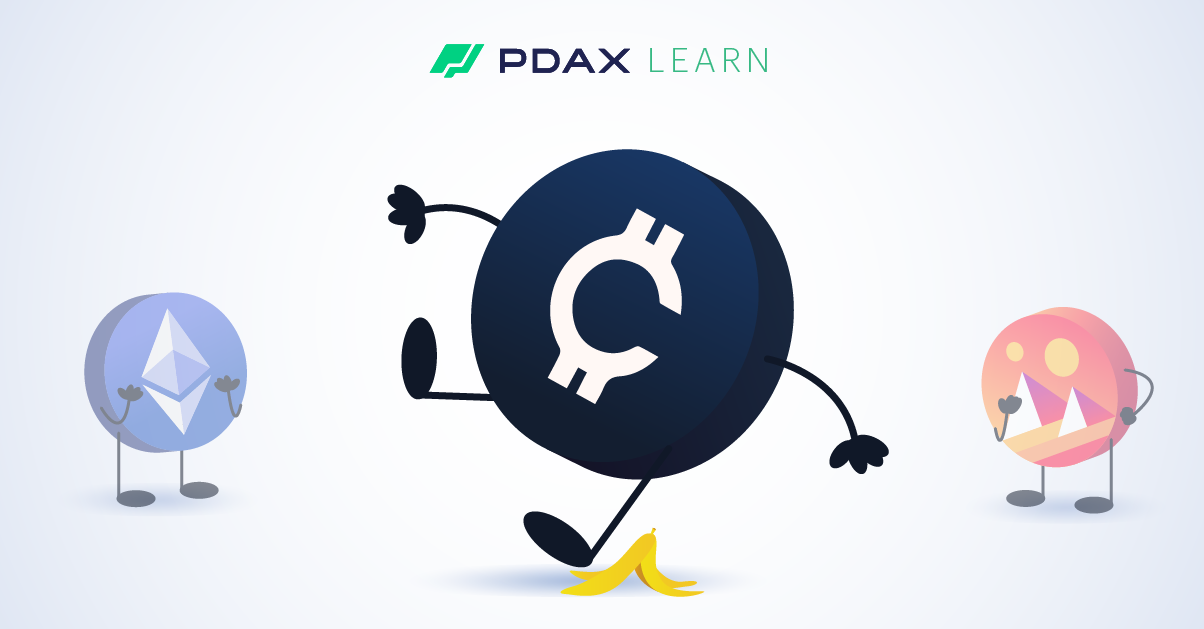What is slippage?
PDAX
December 05, 2022
5 min read
TL;DR
Slippage is a term used in the financial trading industry that describes the occurrence of having the price of a certain asset be different from what was originally expected. For example, if you place a buy order for a certain crypto at a given price, it’s possible that the price will change once the order actually goes through. The difference in amount between the expected price and the executed price is referred to as ‘slippage’.
What is slippage and why does it happen?
Slippage is most common in volatile industries, especially in cryptocurrency, where prices have the potential to fluctuate significantly over a short period of time. It is not uncommon for prices to rise or drop even in the short time that it takes to execute a trade after the initial order was placed in an exchange’s order book.
For example, let’s say that a trader places an order to buy 100 Solana (SOL) coins at $35 per coin, for a buy order amount of $3500. But due to ongoing market conditions while the order was set, the price of SOL suddenly jumped to $36 when the trade was executed. This would mean that the trader will receive only 97.22 SOL for the amount offered, given the updated price for SOL.
Another factor that greatly influences slippage is the available liquidity for a given asset. Typically, the higher the liquidity or the trading activity for an asset, the lower the chances that slippage will occur, as there are enough buy and sell orders which can be matched to fulfill traders’ asking prices quickly. Conversely, if a certain asset has low liquidity, matching orders will be more difficult and will take more time, making it more likely for prices to change considerably.
Is slippage always a bad thing?
It is also possible however for the expected buying price to come out cheaper should the market suddenly take a downturn before the trade is executed.
Using our example, let’s say a trader places the same order to buy 100 SOL at $35 per coin for a total asking price of $3500. But this time, the price of SOL dropped to $34 before the trade could be executed. The trader will then receive 102.94 SOL from the 100 SOL originally expected.
How to avoid slippage
While there is no guaranteed way to prevent slippage from happening completely, there are a few best practices that traders can do in order to minimize the likelihood of slippage:
- Set limits orders instead of market orders - Though market orders may be faster and more convenient, slippage is more likely to occur since the executed prices will be dependent on the ongoing market conditions. Setting a limit order means you are signaling that you are only willing to buy or sell at a specific price and are willing to wait until the market conditions meet your expectations.
[Note: PDAX currently only has limit orders available for PHP trading pairs. Our teams are at work to make this available for all trading pairs soon. Visit this [insert link] to see the full list of PHP trading pairs.]
- Trade only on exchanges with high liquidity - Trading on exchanges with high liquidity, with multiple liquidity partners, will reduce the occurrence of slippage since there is more guaranteed supply to fulfill trade orders in less time. Especially when it comes to newly launched cryptocurrencies, knowing which exchange carries the most liquidity for that asset will be an advantage in ensuring your orders push through.
- Trade during business hours - Even though the crypto trading industry ‘never sleeps’, the peak hours for trading are the usual business hours for your given region. Though this may not matter as much for exchanges that cater globally, remember that a higher trading volume always means a lower chance of slippage. During weekends when there is considerably less trading activity, prices are observed to swing more frequently.
- Avoid making large trades - Placing large buy or sell orders will make it more difficult for order books to find enough matches to meet your order. If you are trading a large amount, it is best to break it into a number of smaller orders to lessen the chances of slippage.
Conclusion
It is safe to say that there is no getting around slippage completely, especially in the crypto space which has relatively high volatility to start with. While some losses are to be expected to a certain extent as a result of slippage, it’s still possible to minimize these losses through careful planning and strategic order placements. Over time, experienced traders will gather enough knowledge and intuition that will help them navigate their way around slippage.
Ready to start with crypto?
Start your trading journey with PDAX.
DISCLAIMER: The statements in this article do not constitute financial advice. PDAX does not guarantee the technical and financial integrity of the digital asset and its ecosystem. Any and all trading involving the digital asset is subject to the user’s risk and discretion and must be done after adequate and in-depth research and analysis.
About PDAX
PDAX is a BSP-licensed exchange where you can trade Bitcoin, Ethereum, and other cryptocurrencies directly using PHP!
Featured Posts
You might also like
Bitcoin ETFs have been approved: What you need to know
PDAX
January 15, 2024
How to build your crypto portfolio
PDAX
December 23, 2022
What are order books?
PDAX
November 16, 2022
